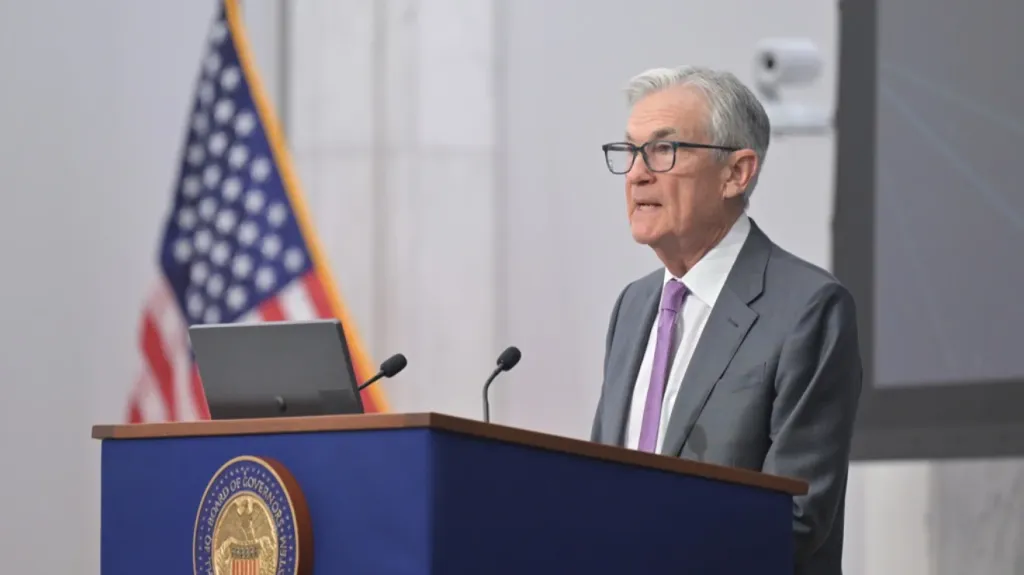Fed didn't change rate for the fourth time in a row, but predicts 2 rate cuts in 2025
Despite Trump's calls for a sharp rate cut, the regulator continues to take a wait-and-see attitude

The US Federal Reserve left the key rate unchanged for the fourth time in a row. This decision coincided with the expectations of economists and market participants. They believe that the rest of the year will be difficult for the economy, and in the short term it is not worth counting on a recovery.
Details
The US Federal Open Market Committee of the Federal Reserve Board kept the key rate in the current range of 4.25-4.5%, according to a statement on the regulator's website. This decision was made following the results of the two-day meeting on June 17-18.
This is the fourth time the Fed has kept the rate at the same level - after cutting it by a full percentage point in the final months of 2024. At the same time, the median forecast of committee members still calls for a 50 basis point rate cut by the end of this year.
The Fed now expects higher inflation but slower economic growth. The regulator raised its inflation forecast for the end of 2025 from 2.7% to 3%, while lowering expectations for economic growth from 1.7% to 1.4%. "Uncertainty about the economic outlook has declined but still remains high," the press release said. In May, by contrast, the Fed reported that uncertainty had "increased further." The unemployment rate is expected by the regulator to reach 4.5% by the end of 2025 - slightly higher than the previous estimate.
Another difference: missing from the statement is the may language that "risks of higher unemployment and inflation have increased," CNBC and Bloomberg pointed out.
After the Fed's decision, the US dollar fell 0.1% to a daily low. Major stock indices slightly reduced the day's growth, but still remained in the plus. The yield on two-year Treasury bonds slipped by about 4 basis points to 3.91%;
What the analysts are saying
The current situation in the United States is alarming, believes Mark Zandi, chief economist at Moody's Analytics. "The rest of the year is going to be extremely challenging for the economy [...] I don't think it can recover in the near term," Zandi said, pointing to the high probability of higher inflation amid slowing economic activity, as well as vulnerability to external shocks like escalating conflict in the Middle East.
"The Fed is openly showing that it prefers to slow down in the face of the uncertainty of Trump's policies. Central bank functionaries are conservative by nature, and when there are risks to both of their objectives [to control inflation and support employment], they prefer to wait and see what happens next. But the president is clearly not comfortable with that," noted TS Lombard economist Dario Perkins.
High rates are no longer supporting the dollar the way they used to, meaning traders may need to temper their expectations for Fed policy easing for the rest of the year, a a team of analysts at Bank of America said even before the Fed's decision was published - from a cumulative 50 basis point cut to just one at 25. Most economists will carry forward a second rate cut into forecasts for 2026, BofA suggested.
Context
Shortly before the rate decision was released, Trump resumed his criticism of Fed chief Jerome Powell: "So we have a stupid man. Frankly, it's unlikely he's going to lower anything today. We've had ten rate cuts in Europe already, and we've had none. And apparently he's a politician, I don't know. A politician, but not a smart man, and he is costing the country a fortune." Earlier, the U.S. president said he was not going to fire Powell despite repeated accusations against him.
So far, inflation data has belied Wall Street's fears, with the Consumer Price Index (CPI) showing a modest 0.1% increase in May, which was лучше ожиданий экономистов. And the Fed's "favorite" inflation indicator - the Core Personal Consumption Expenditures (Core PCE) index, which doesn't factor in volatile food and energy prices - added as much in April. It was up 2.5 percent over the past 12 months, showing the smallest increase in more than four years. But economists noted that April's data did not reflect the impact of Trump's duties on prices, so we'll have to wait for figures for May and beyond for more relevant results.
The situation was exacerbated by the escalating conflict between Iran and Israel, which caused oil prices to jump. At the same time, data on the labor market, retail sales and other U.S. indicators suggest a possible slowdown in the economy. GDP growth is now expected to fall to 1.3% in 2025, down from an April forecast of 1.9%, and year-end inflation is expected to be 3.1%, Reuters reported citing data from a survey by the National Association of Business Economists (NABE). It also showed that the expected unemployment rate, which stood at 4.2% in May, will rise to 4.3% by the end of the year and reach 4.7% by early 2026.
Given these risks, market participants assume that the regulator will continue to take a wait-and-see stance and will not cut the rate until at least September. According to data CME FedWatch, a tool for monitoring market expectations regarding the US Fed's decisions, only 16.5% of traders believe that the regulator will reduce the rate at the end of July, but more than half are already expecting easing after the meeting in September.
